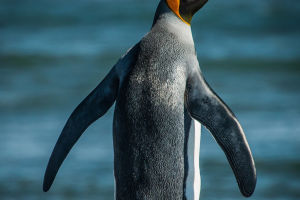Every year in mid-October, around 8,200 tundra swans fly to the UK for the winter. But they're still gone this year. Why? To the British, the sight of these beautiful migratory birds flying by was an omen of winter.
As early as the 18th century, the famous printmaker Thomas Bewick (1753-1828) accurately portrayed their images. Later, the tundra swans living in Eurasia were named after him in English and called Bewick's swans.
These migratory birds come to the UK to escape the harsh winters at home.
However, some wildlife experts say warmer temperatures due to climate change are gradually attracting swans to spend the winter there.
In the past, most of these swans who came to the UK for winter stayed on the east coast of England, but about 300 began to fly to the wetlands of the Severn Estuary in southwest England on October 21, year after year.
They have only been "late" three or four times in the past few decades. In 1969 they arrived on November 6th, in 1981, and in 1982 on November 3rd, and the last time later than October 21st was in 1995, which came on October 27th.
The Slimbridge Wildfowl and Wetlands Centre, located near the Severn Estuary, provides a good habitat for these swans and a convenient place for people to observe them.
The staff at the center see the same swans flying in for the winter year after year, naming the birds they are particularly fond of. One of the most famous is called Crinkly, named after the peculiar shape of the neck.
Its mate-seeking experience has become a media-locked story in recent years. Will it come with friends this year?
Grahame Madge, an officer at the Royal Society for the Protection of Birds (RSPB), said: “There are a total of 23,000 Bewwick swans in Europe, and among them, there is a collective memory of the route from Siberia to wintering places like the UK.”
The worry now is that if the weather changes they shorten their migratory flight distances and choose to stay further east for the winter, they may lose the memory of flying back to Slingbridge, England.
However, another bird conservation group, the British Trust for Ornithology, said it was too early to be concerned.
The reason is that after the swan decided to take off from the Siberian tundra and head west, the 3,000-kilometer flight had to pass through Estonia, Denmark, Germany, and the Netherlands before finally reaching the UK.
This year, the feeding conditions in the Netherlands were exceptional, so the extended stay is not surprising.
Tundra swans being late isn't entirely a bad thing. In previous years, their early arrival usually heralds an extraordinarily cold winter. It was also somewhat of consolation after southern England had just seen its first October snowfall in decades.


